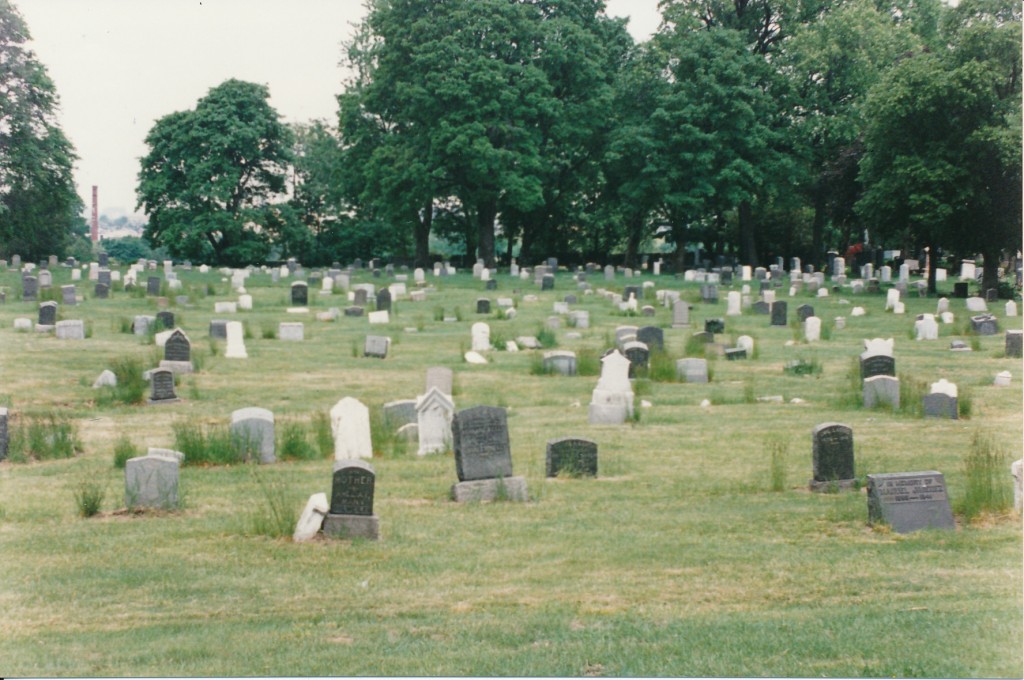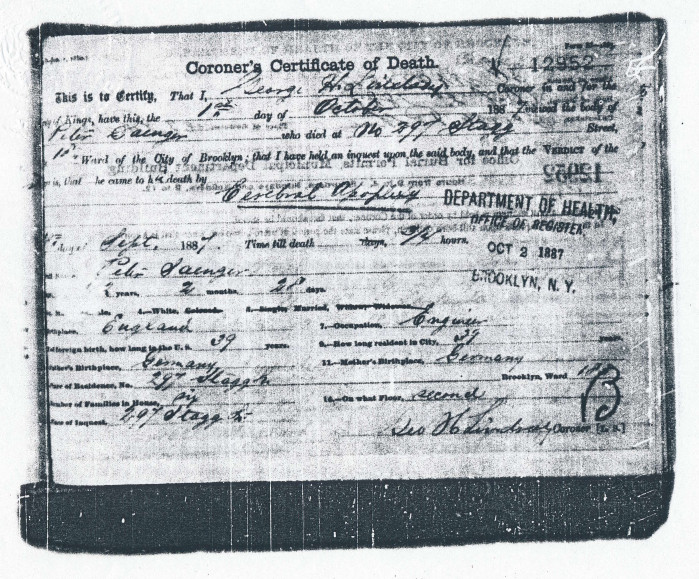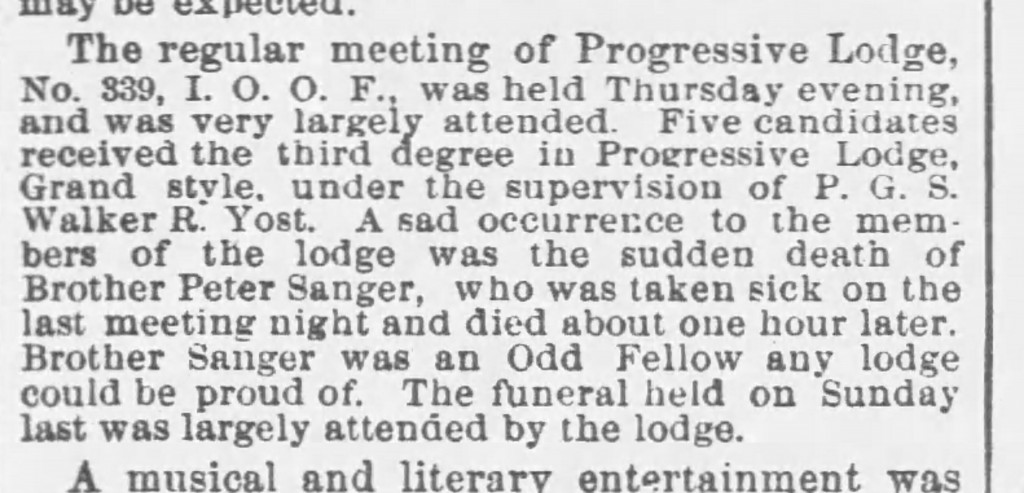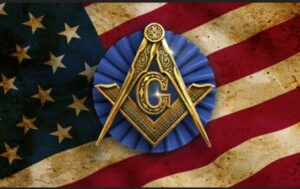Tracing the Fraternal DNA
By W:. Ronald J. Seifried, DSA
Over twenty-five years ago, I started researching my family tree. In the mid-1990’s, online databases filled with thousands of scanned documents were not available online. A genealogist had to travel to downtown Manhattan to the National Archives, scroll through reels of microfiche just to find the index number of a possible match to the actual Federal or State Census page. To obtain a birth, marriage or death certificate, a dedicated researcher would travel to the Municipal Archives and research again via indexed microfiche before possibly obtaining a certificate.
Depending on when it was recorded, a census page is filled with valuable information, including occupation, birthplace, language, home value, salary and parents’ birthplace, while a birth, marriage or death certificates include additional information, including birth and death date and place of burial.

While these valuable records retain a treasure trove of important information, they never include any data if an ancestor was a member of a fraternal organization. If you are lucky, maybe a masonic square and compass can be found on a long-forgotten headstone, or a worn relic was preserved by nostalgic minded older relatives. But chances are, most of these artifacts were discarded by descendants who did not appreciate who their ancestor really were.
My maternal grandfather was a Knight of Columbus for many years. I have his gloves and sash in my archives, but sadly, he was mugged in the early 1980’s and forever lost his beautiful ring. I never heard any tales of great grandfathers who were masons or any other fraternal society. My fraternal heritage began and ends with him.
Or so I thought.

I recently signed up for an interesting online database that has a large collection of digitally scanned newspapers dating to the late 18th century. The website is searchable, and despite not being perfect, it led to me some new discoveries with my ever-expanding family tree.
One of my 2nd great grandfather’s was born in Whitechapel, Middlesex, England on July 21, 1845. Although both his parents were of German descent and only stayed in England for six years, Peter Sanger’s national pride was toward his birthplace of the United Kingdom. His devotion to Queen Victoria and his homeland was told to me by his granddaughter, my great-aunt, to the point that he would proudly argue with anyone who would listen, that England would one day regain control of the American colonies.
I was able to obtain Peter Sanger’s death certificate many years ago, which includes his premature death at the age of 42 on September 29, 1887 on the second floor of 297 Stagg Street, East Williamsburg, Brooklyn, New York. The location was a mystery to me, as the Sanger family lived on 41 Stagg Street, and his parents Cornelius and Mary were living on 41 Leonard Street. There were no other records of 297 Stagg Street that I could locate, so any leads on his death location went cold.
In the “Secret Society Matters” section, which reports on the “Doings of Brooklyn Lodges and Councils,” of the Saturday, October 8, 1887 edition of the Brooklyn Times Union, an interesting paragraph buried in the second column piqued my interest.
The regular meeting of Progressive Lodge No. 339, I.O.O.F. (International Order of Odd Fellows) was conferring the third degree on five candidates on Thursday, September 29, when Brother Peter Sanger, suddenly became sick and passed away one hour later. The funeral already occurred on Sunday, October 2 by the time the article was published, with many of his brothers in attendance.
Based on his death certificate, I knew Peter Sanger passed away of a cerebral apoplexy, also known as a stroke, which can lead to a sudden death. There was no other Peter Sanger’s living in Brooklyn with the same age, based on an extensive search of census and directories.
Was the lodge meeting held on the second floor of 297 Stagg Street and was my 2nd great grandfather a dedicated Odd Fellow who passed away on the night of a meeting? I have concluded that my long-forgotten ancestor was indeed a dedicated Odd Fellow, devoted to his lodge meetings until he took his last breath.

In many ways, it is comforting to learn that this man was surrounded by his concerned and caring brothers almost 133 years ago, and not dying alone. His last thoughts were probably of concern for his wife and seven children, including my great grandfather Charles. Peter Sanger died too young, but he left behind a legacy that includes several generations of hundreds of descendants. I would like to think that the two of us share our common DNA that has brought us together in similar fraternities over a century apart.
Postscript
When I continued to read about the other fraternal meetings held in the autumn of 1887, yet another piece of information caught my eye. Joseph Irwin, Past Commander of Huntington Council No. 1176, was appointed District Deputy Grand Commander over the councils in Suffolk, Queens and Richmond counties. Could this be the same Joseph Irwin, raised as a Master Mason in 1871 in Jephtha No. 494 and was Master of the lodge in 1884-1885? That story is for another day…
The post Tracing the Fraternal DNA appeared first on Jephtha.com.

